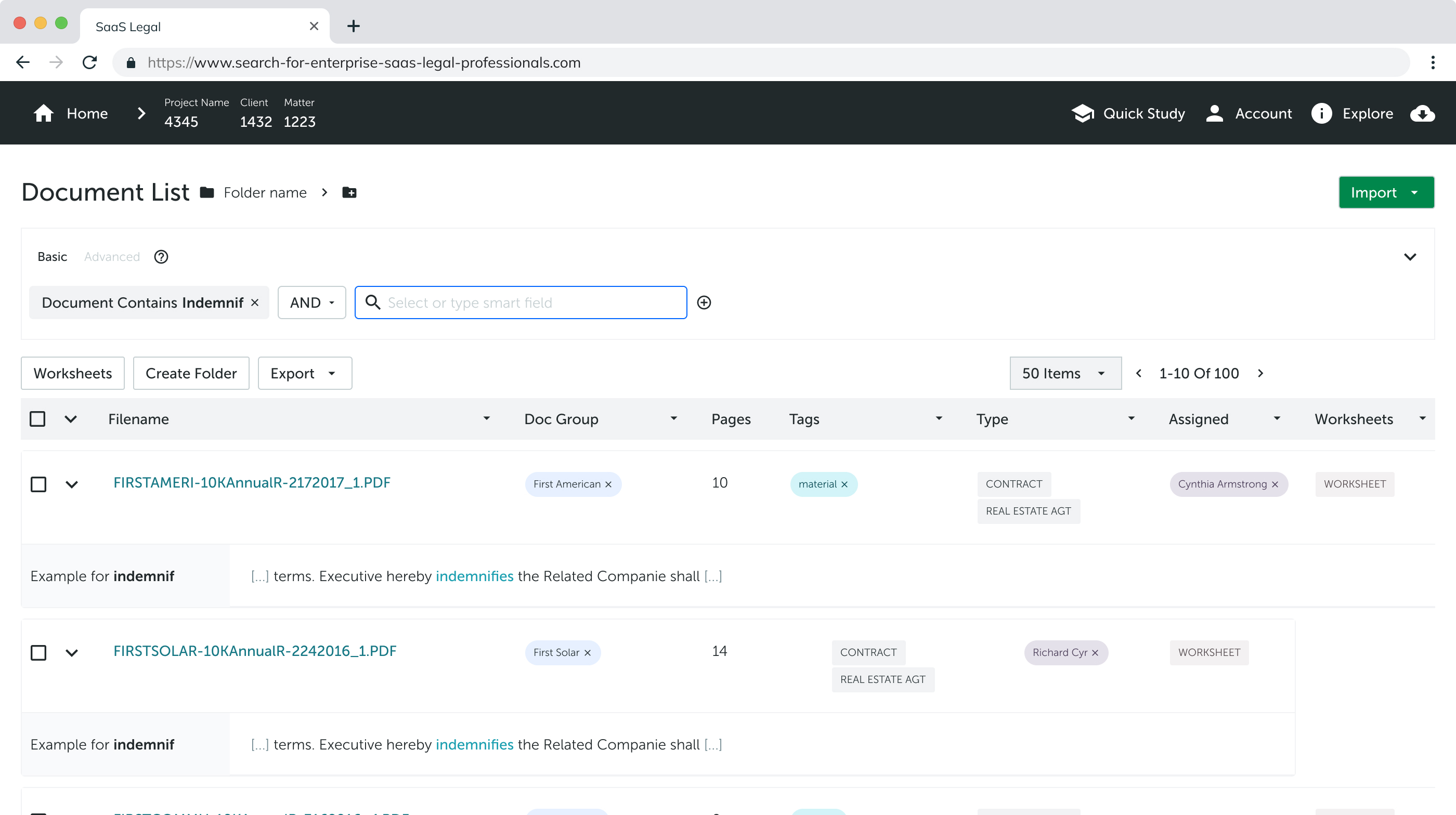
Case Study: Enhancing Search Functionality for Enterprise SaaS and Legal Professionals
As a Lead UX Designer with over a decade of experience, I was tasked with two critical projects: transforming search functionality within an enterprise SaaS product and developing a tailored search solution for legal professionals. Both projects involved significant challenges, including low UX maturity and highly specialized user needs. This case study details my approach to tackling these challenges through user-centered design, cross-functional collaboration, and innovative problem-solving.
Project 1: Elevating Search Functionality for Enterprise SaaS
Challenges Faced
The first challenge was to revolutionize the search functionality of an enterprise SaaS product. The team needed a higher level of UX maturity, relying heavily on existing prototypes and more alignment on the core problem we aimed to resolve. In addition, entrenched processes and biases made it difficult to introduce new ideas.
To overcome these hurdles, I took the initiative to address the misalignment and ensure the team understood the real problem. This involved shifting away from the reliance on outdated prototypes and adopting a more exploratory, user-centric approach to design.
Research and Discovery
I devised a comprehensive research plan that included user interviews, surveys, and competitive analysis. The goal was to uncover user pain points and understand the market's landscape of similar products. This phase was crucial for aligning the team with business goals and making data-driven decisions.
A competitive analysis of legal search tools, for example, revealed our product's strengths and weaknesses compared to others in the industry. Updating personas based on the insights gathered helped tailor our solution to our users' needs.
Design and Collaboration
I collaborated closely with the Senior Developer, Product Manager, and Product Owner to define the requirements for search functionality. Together, we created real-world user scenarios that guided our design and technical decisions. These scenarios ranged from basic search queries to advanced, multi-query combinations using Boolean operators.
For instance, we introduced editable search tags, allowing users to modify search queries dynamically. A toggle feature enabled users to switch between AND and OR operators, providing flexibility for complex search queries. This feature was designed to cater to both novice and advanced users, allowing them to tailor their search experience according to their needs.
User Testing and Validation
TWe conducted multiple rounds of user testing using interactive prototypes created in ProtoPie. Usability tests were designed to validate both the basic and advanced search features. Boolean operators became a focal point, with advanced users appreciating their versatility while less experienced users struggled.
To address this, we provided contextual guidance and simplified explanations, which improved usability across the board. The usability testing process also revealed potential technical challenges, which we proactively addressed with the development team.
Outcome and Impact
The revamped search functionality led to a 42% increase in user satisfaction, with users reporting a significant improvement in their ability to find relevant information. The project demonstrated the importance of balancing advanced features with user-friendly design, ensuring inclusivity for a diverse range of users.
| Product | Key Features | User-Friendly | Advanced Search Options | Types of Search Queries | Heuristic Evaluation |
|---|---|---|---|---|---|
| LegalTech X | Natural language processing, Boolean operators, Faceted search | Yes | Yes | Plain language, Boolean logic, Filters | 7/10 – Intuitive UI with effective filters. Some users find advanced options overwhelming. |
| LawSuite | AI-driven suggestions, Filters, Document tagging | Yes | Yes | Keywords, Document tags | 8/10 – Highly user-friendly with AI recommendations. Tags enhance organization. |
| CaseLegal | Intelligent auto-complete, Filters, Real-time indexing | Yes | Yes | Auto-suggested queries, Filters by category | 6/10 – Good auto-complete but indexing can be slow. Limited integration with external databases. |
| LegalEdge | Contextual search, Customizable filters, Document clustering | Yes | Yes | Context-based queries, Filters by type | 9/10 – Strong contextual search capabilities. Clustering aids in relevant results grouping. |
| CounselPro | Natural language processing, Advanced filters, Synonyms | Yes | Yes | Natural language queries, Complex filters | 7/10 – Effective natural language processing. Filters can be complex for novice users. |
Project 2: Crafting Effective Search for Legal Professionals
Challenges Faced
Simultaneously, I worked on a specialized project aimed at legal professionals who needed to search large document sets quickly and efficiently. The challenge was to design a search solution that accommodated their complex needs while remaining intuitive and easy to use.
Research and Discovery
Working with legal experts, I developed use cases that addressed specific challenges faced by lawyers, such as querying multiple documents and filtering through vast amounts of legal information. We also conducted A/B testing to compare different workflows, ensuring that our final design was data-driven and aligned with user needs.
The competitive analysis of existing legal search tools helped identify gaps in the market and areas where we could differentiate our product. This insight led to the creation of features like contextual search and customizable filters, which addressed the unique needs of legal professionals.
Design and Collaboration
Similar to the enterprise SaaS project, cross-functional collaboration was key. By working closely with the development and product teams, we defined the technical requirements for search query strings. We used real-world scenarios, including edge cases, to guide the design process and ensure the functionality met the diverse needs of legal professionals.
To enhance the search experience, we implemented features such as real-time indexing, contextual search, and advanced filtering options. These features were rigorously tested to ensure they could handle complex legal queries without overwhelming the user.
User Testing and Validation
Extensive user testing was conducted to validate the design. By involving legal professionals in the testing process, we were able to refine the features to ensure they were both effective and easy to use. Clear explanations and contextual help for advanced search features were key in making the functionality accessible to all users.
Outcome and Impact
The final product successfully improved the efficiency and accuracy of legal searches, with users reporting a 35% reduction in time spent finding relevant information. The solution was well-received, demonstrating how user-centered design can meet the complex needs of niche markets like legal professionals.
Conclusion
These two projects underscore my ability to drive impactful design solutions in both enterprise SaaS and niche professional markets. From revitalizing search functionality for a broad user base to crafting a specialized search solution for legal professionals, I consistently focused on user-centered design, cross-functional collaboration, and data-driven decision-making.
The 42% increase in user satisfaction for the enterprise SaaS product and the 35% reduction in search time for legal professionals highlight the tangible impact of these projects. Moving forward, I continue to champion innovative solutions that align with user needs and drive business success.

Dynamic input
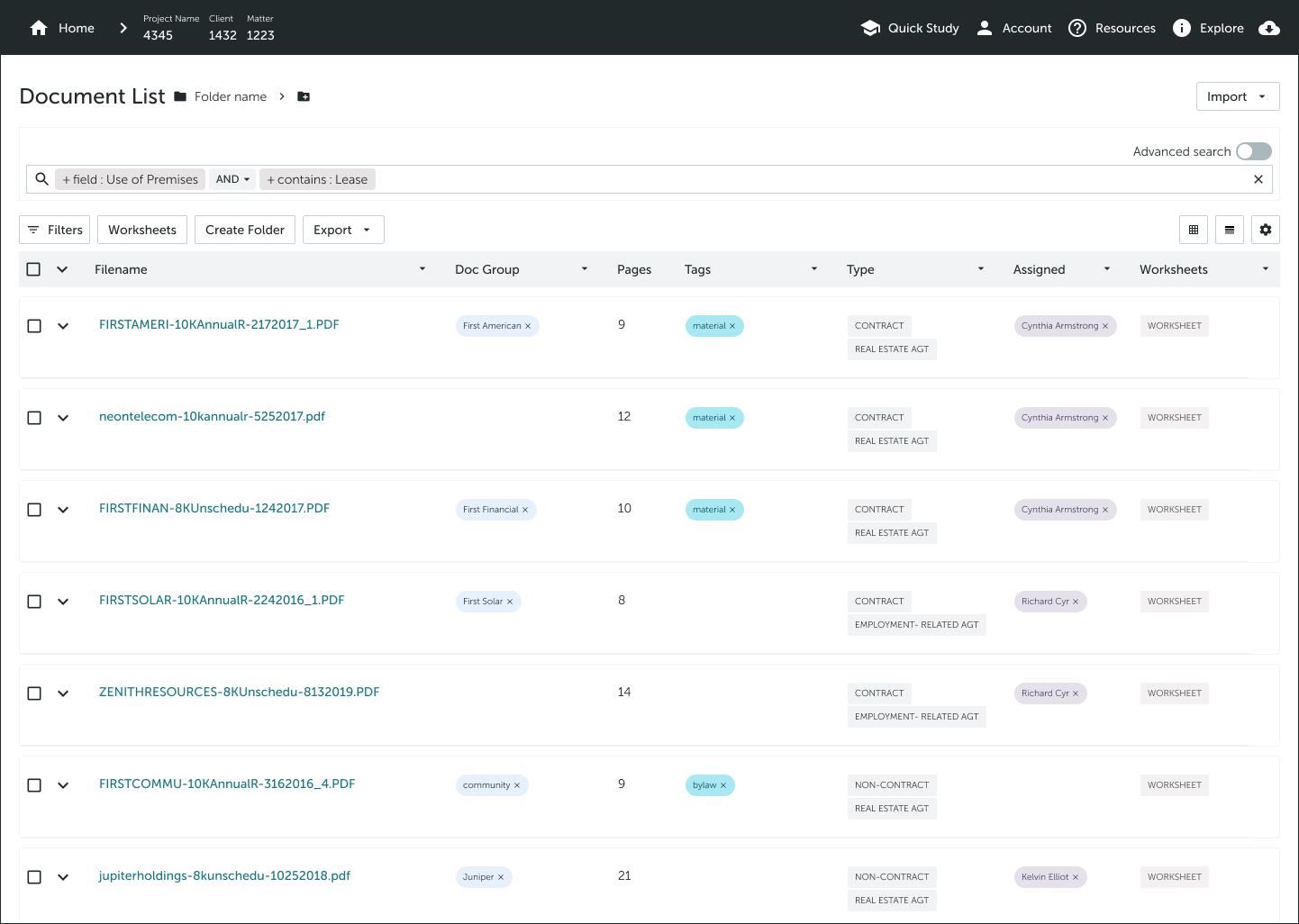
AND/OR operator between search queries
Early Advanced Search Concepts

Visual mode

Text mode
Empowering User-Centric Design: Collaborative Scenario Use for Diverse Query Types and Improved Cross-Functional Collaboration
In close collaboration with the Senior Developer, Product Manager, and Product Owner, we embarked on an exhaustive journey to outline requirements for search query strings. This approach incorporated real-world examples from various user scenarios, including edge cases. These scenarios laid the groundwork for developing multiple query types, ensuring the search functionality met various user needs. This approach enhanced cross-functional collaboration by providing a common point of reference for discussions, clarifying technical nuances for the team. Furthermore, these scenarios revealed technical challenges, aiding proactive problem-solving.
Validating through User Testing:
Using refined scenarios, I conducted user testing to validate design iterations, fine-tuning solutions based on user preferences.
Enhancing User Experience: Validating Design through Extensive User Testing and Interactive Prototyping
In collaboration with the Senior Developer, Product Manager, and Product Owner, I embarked on an in-depth journey to define meticulous requirements for search query strings. This collaborative process incorporated real-world examples from diverse user scenarios, including edge cases. These scenarios formed the foundation for multiple query types, ensuring the search functionality catered to diverse user needs. This user-centric approach bolstered cross-functional collaboration by providing a common point of reference for discussions, clarifying technical nuances for the team. Furthermore, these scenarios revealed hidden technical challenges, offering insights into potential roadblocks and enabling proactive solutions.
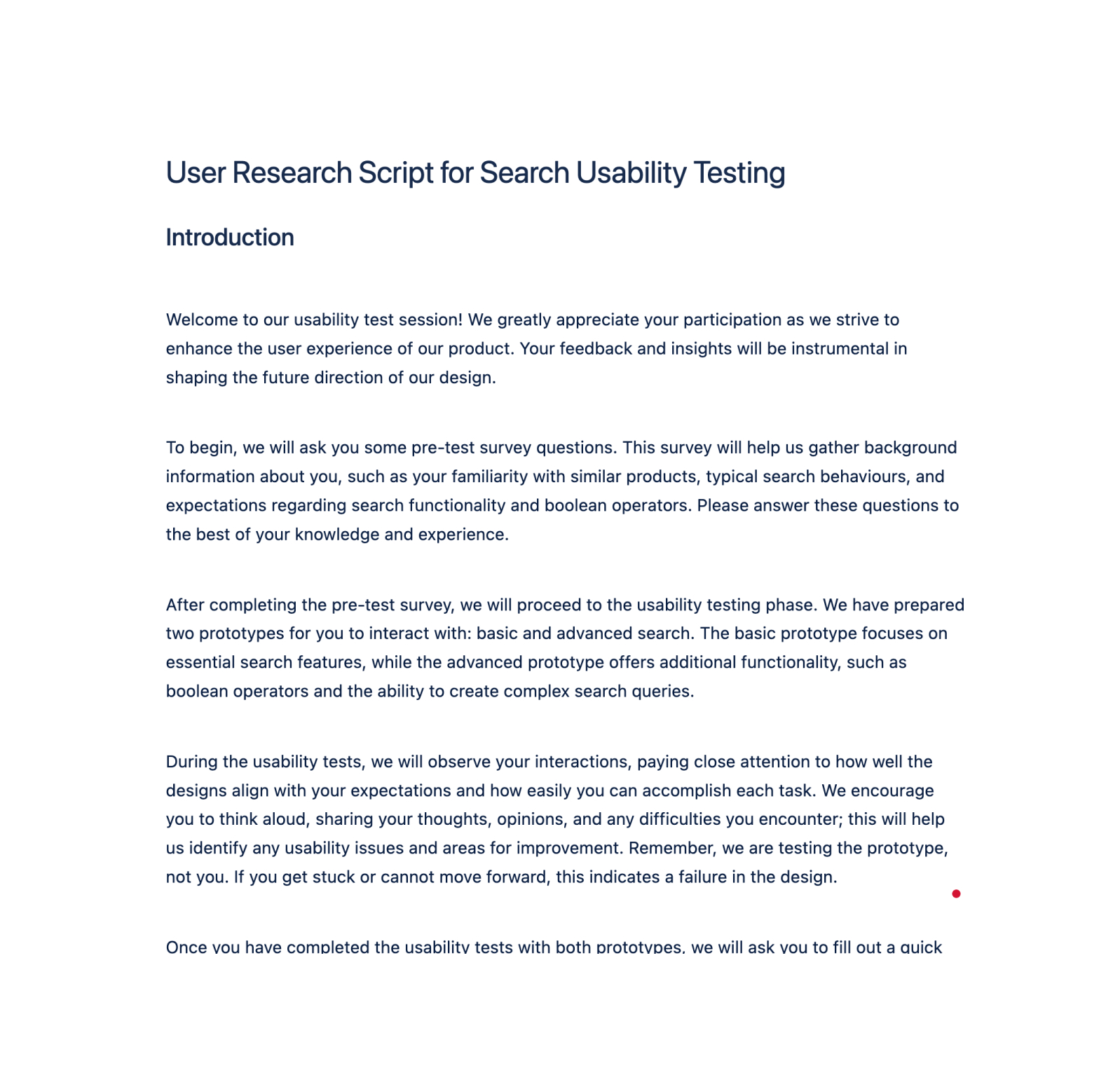
User research script
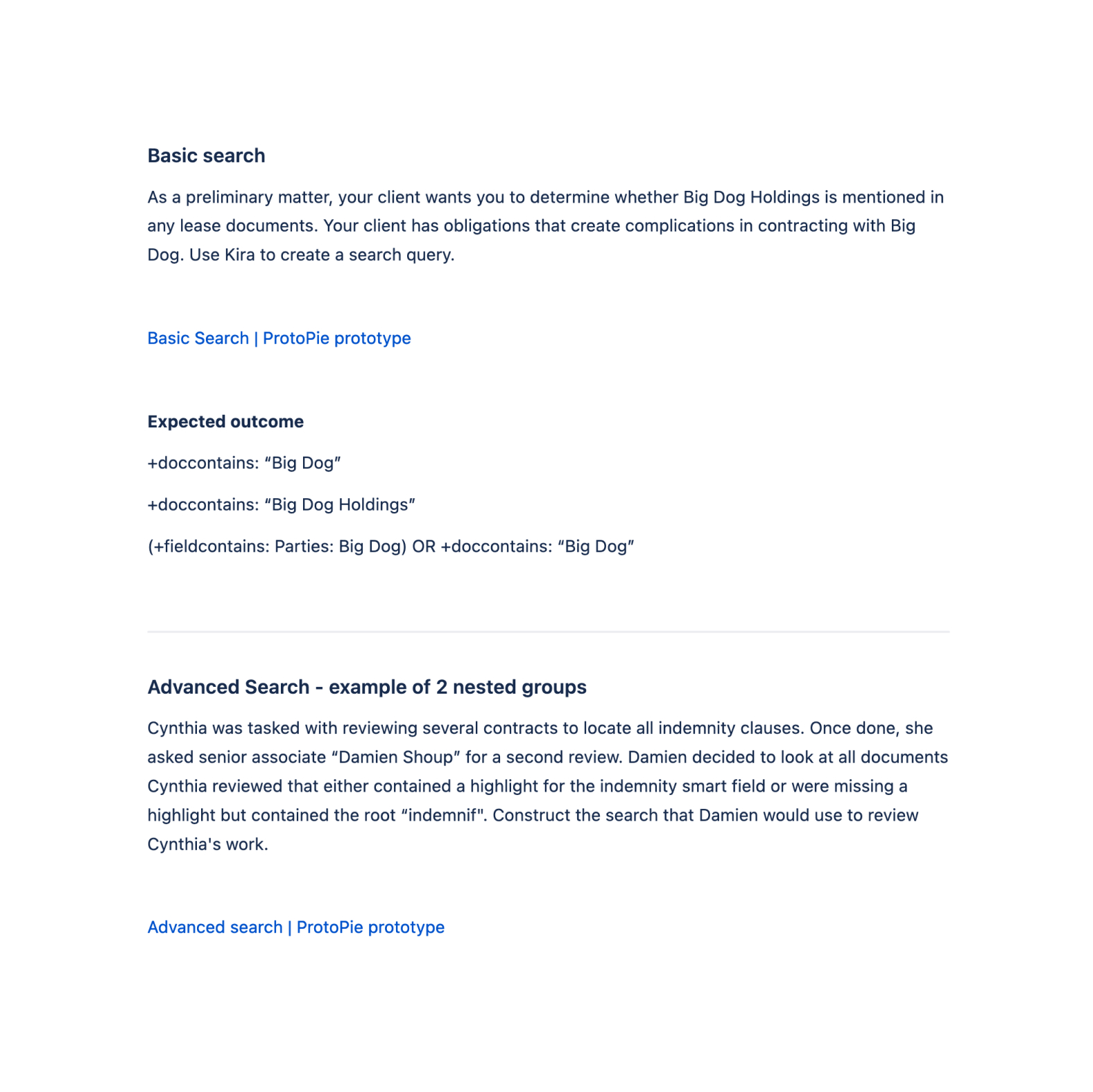
Usability test scenarios
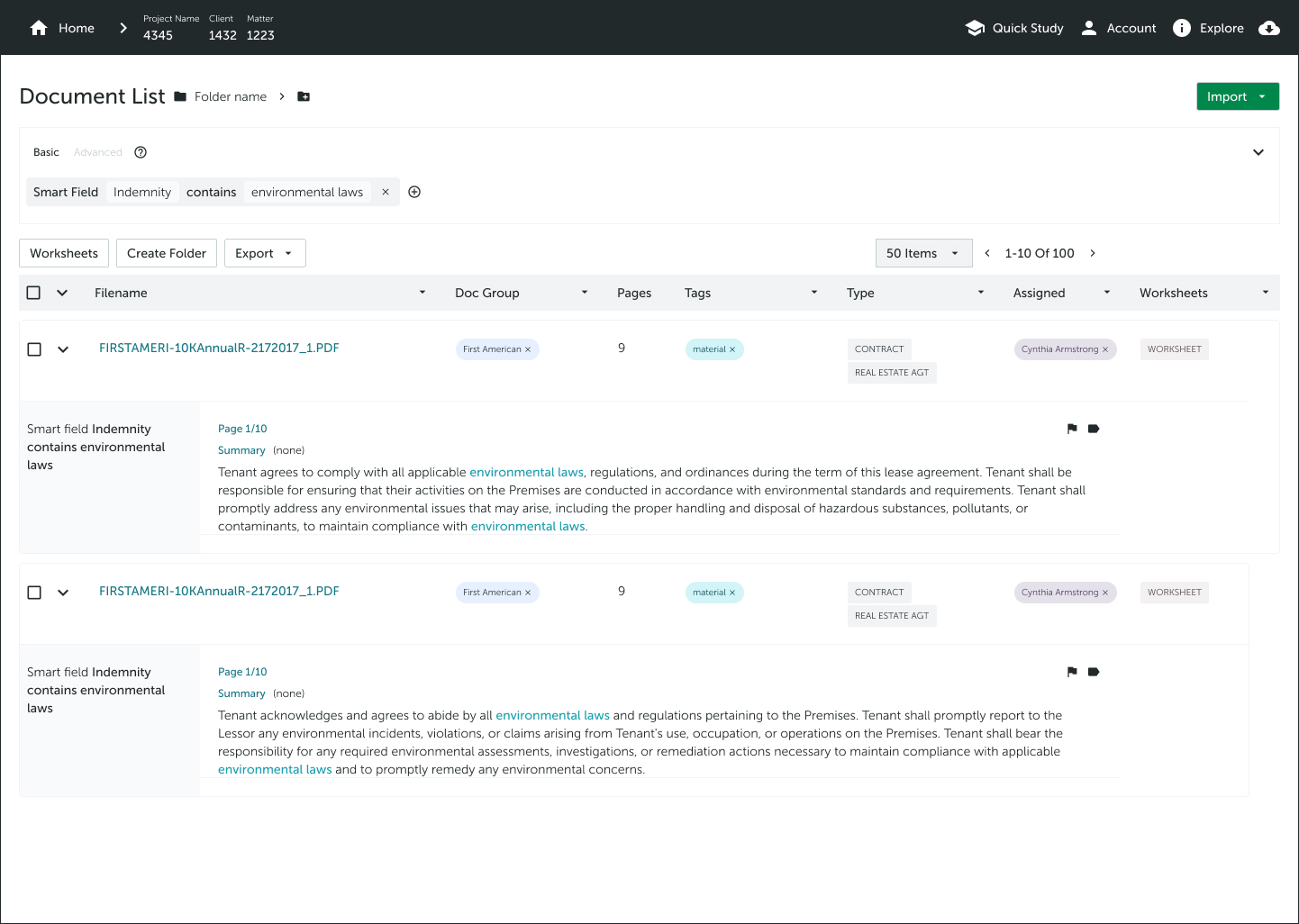
Scenario one - basic search
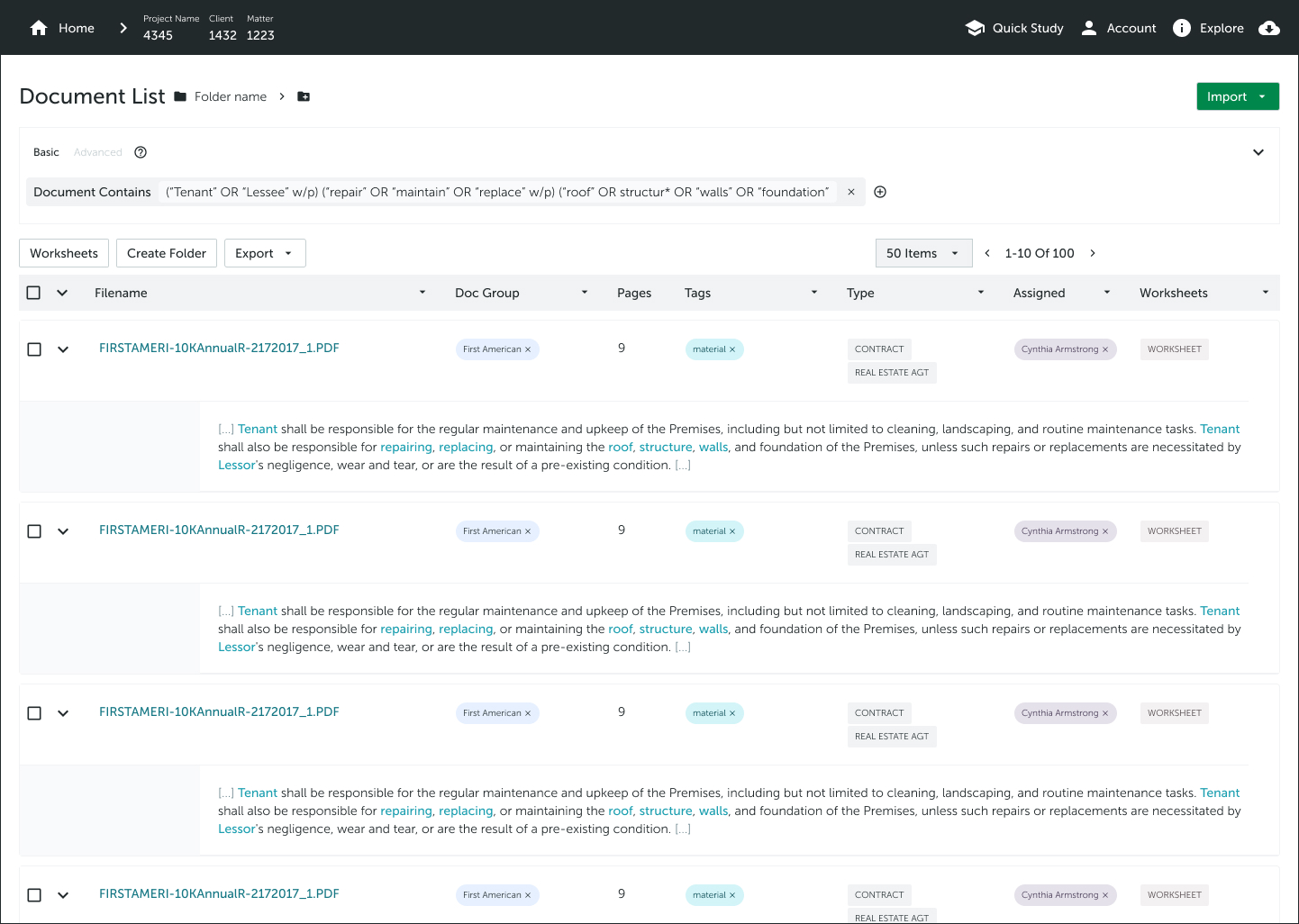
Scenario three - basic search with operators
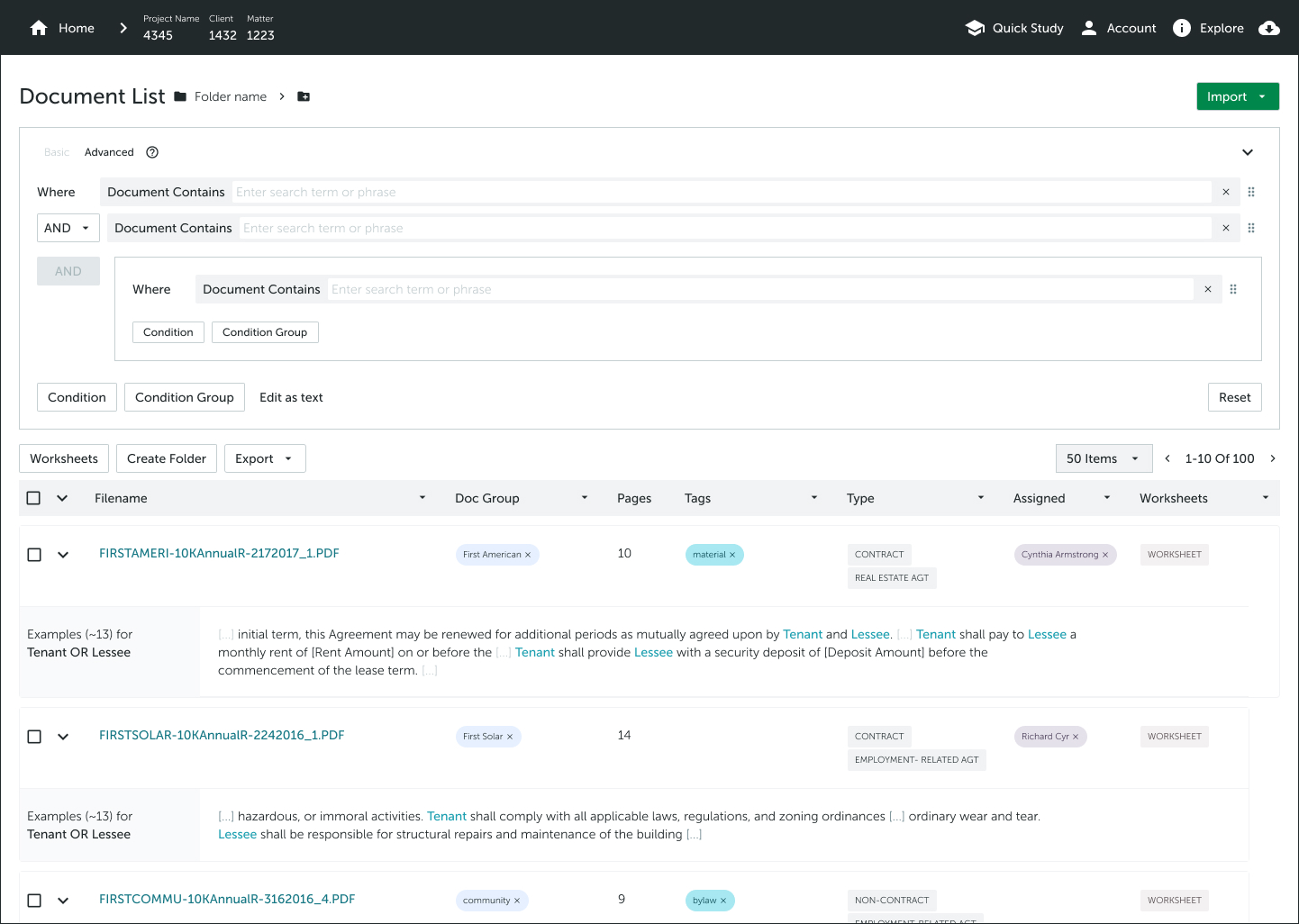
Advance search starting template
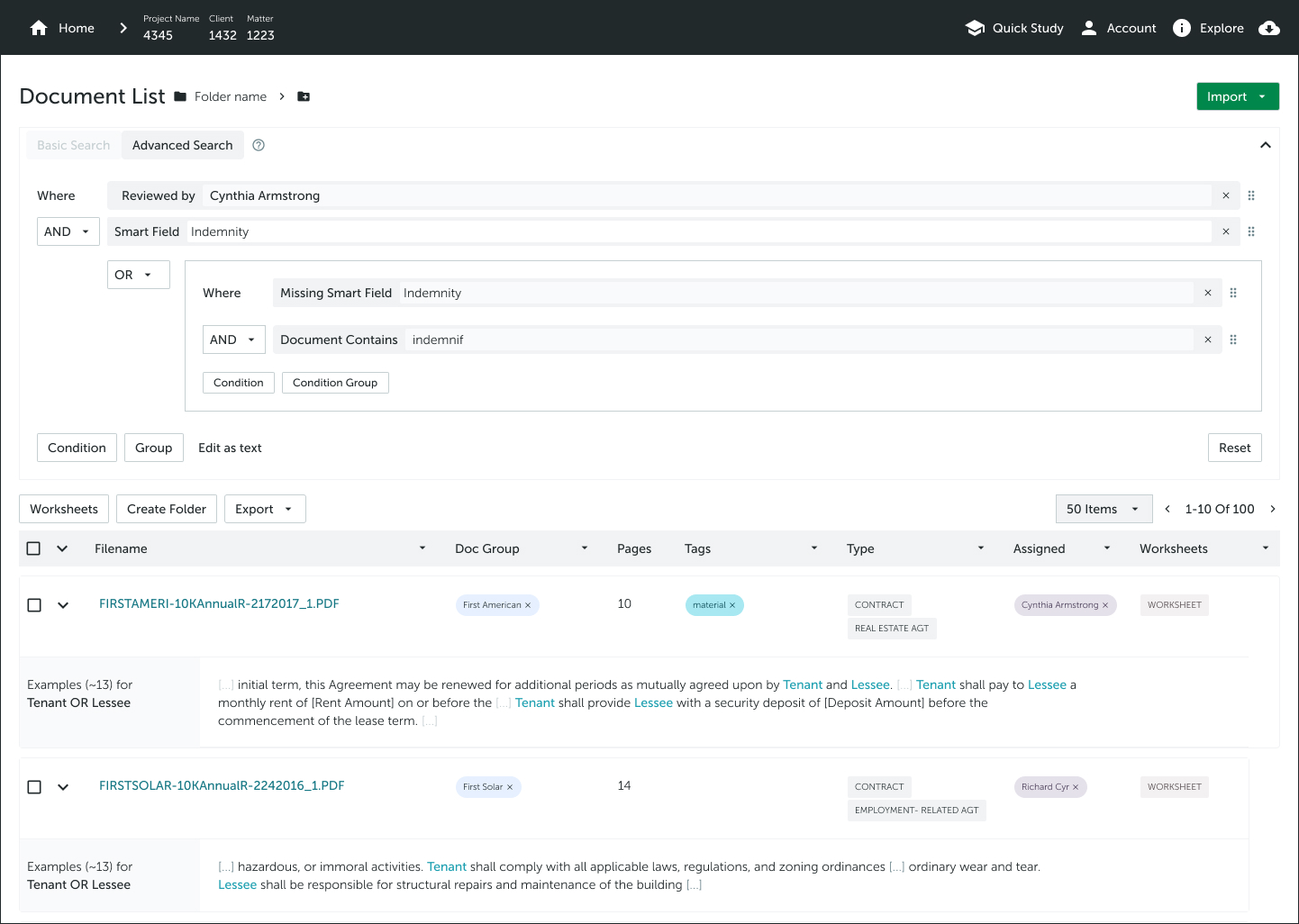
Scenario five - advanced search
User Testing for Validation
We employed comprehensive usability testing, using carefully crafted scenarios to validate design changes. Involving both team members and external users, interactive ProtoPie prototypes facilitated realistic engagement with the search functionality.
User Testing Insights
Boolean operators emerged as a key focus during usability testing. While advanced users appreciated their versatility, less experienced users found them challenging. Clear explanations and contextual guidance improved usability for all users, emphasizing inclusivity.
Quantifiable Impact and Lessons Learned
Revamped search functionality led to a remarkable 42% increase in user satisfaction, with users reporting enhanced ability to find information. Balancing advanced features with user-friendliness demonstrated the importance of inclusivity in complex functions.
Crafting Effective Search for Legal Professionals
Simultaneously, I tackled a project tailored for legal professionals, developing a solution to query extensive document sets.
Influencing the Team Beyond Initial Assumptions
A/B testing guided the team away from initial assumptions. By designing trials for two workflows and involving end users, data-driven decisions prompted insights and pivots.
Creating Comprehensive Use Cases
Crafting use cases in collaboration with legal experts addressed specific lawyer challenges, ensuring the search solution was tailored to their domain.
Combined Impact and Conclusion
This case study showcases my diverse skill set as a Lead UX Designer, demonstrating my ability to drive tangible results through challenges, team influence, and user-centered approaches. From enhancing search functionality to specialized solutions, my portfolio reflects my commitment to impactful user experiences in enterprise SaaS and niche domains.